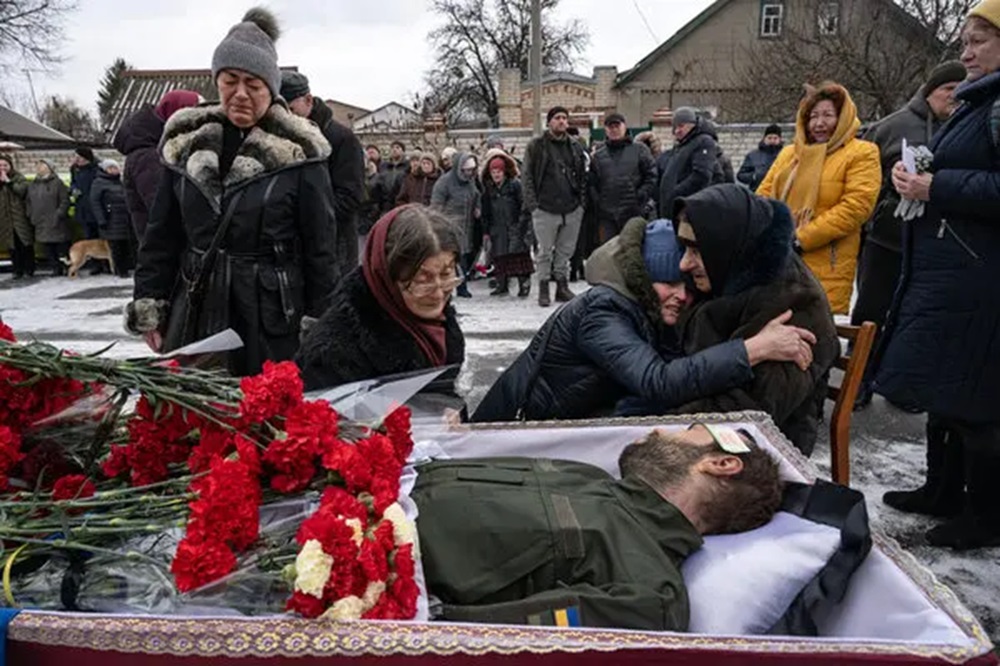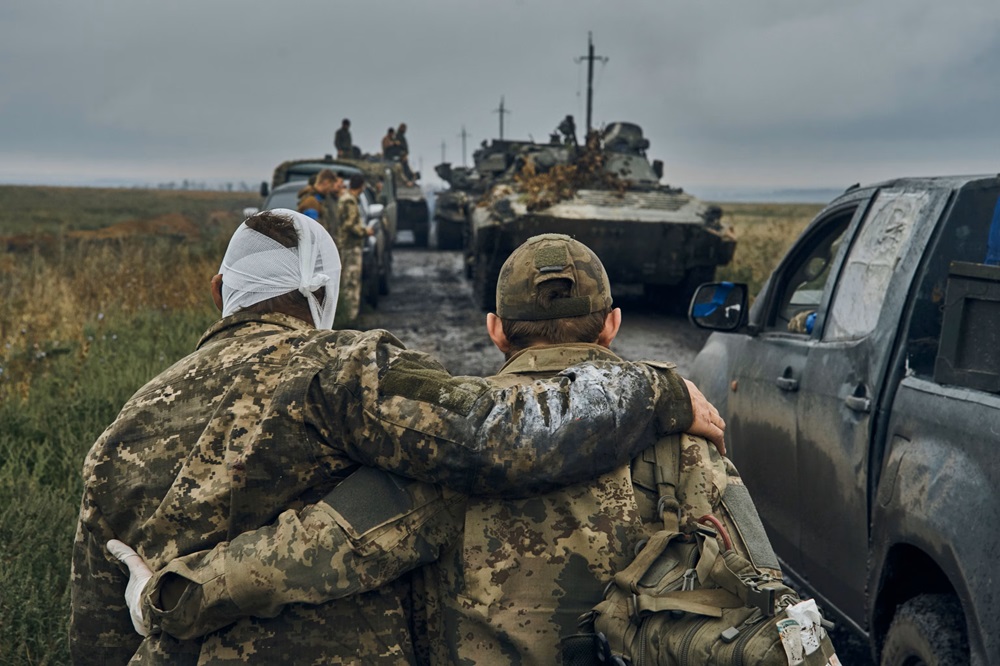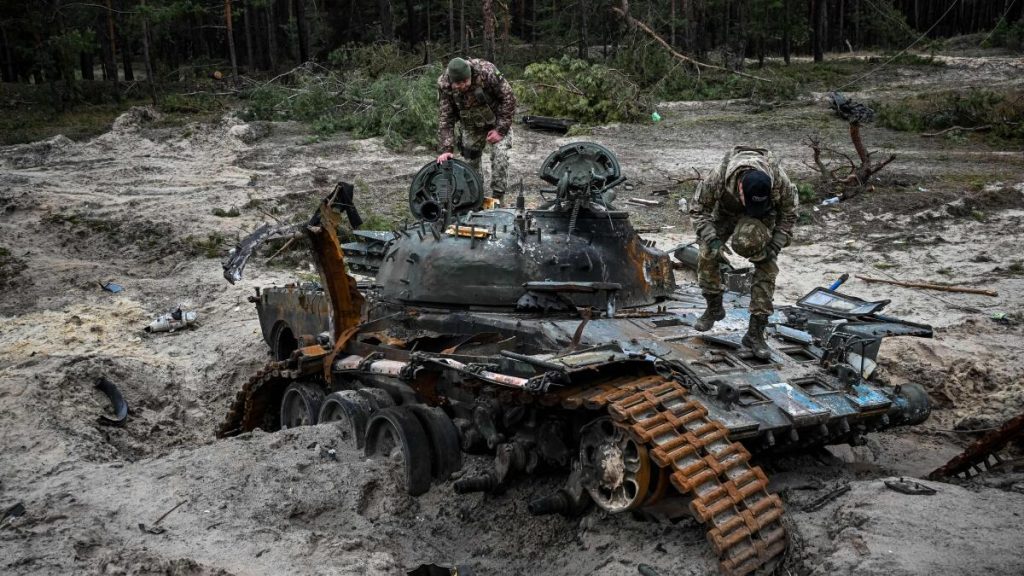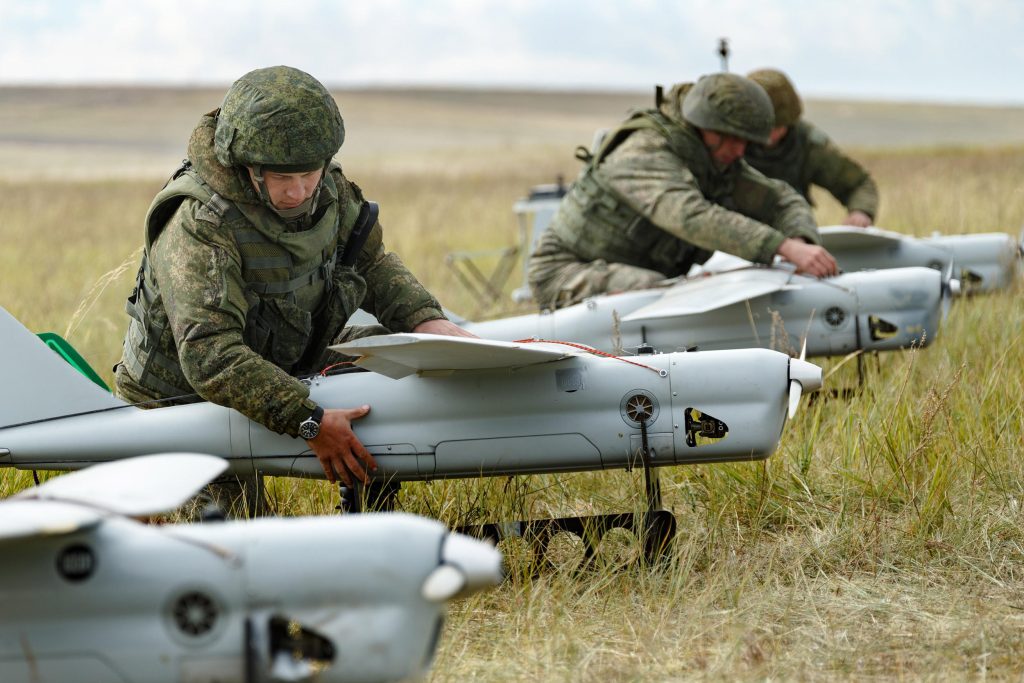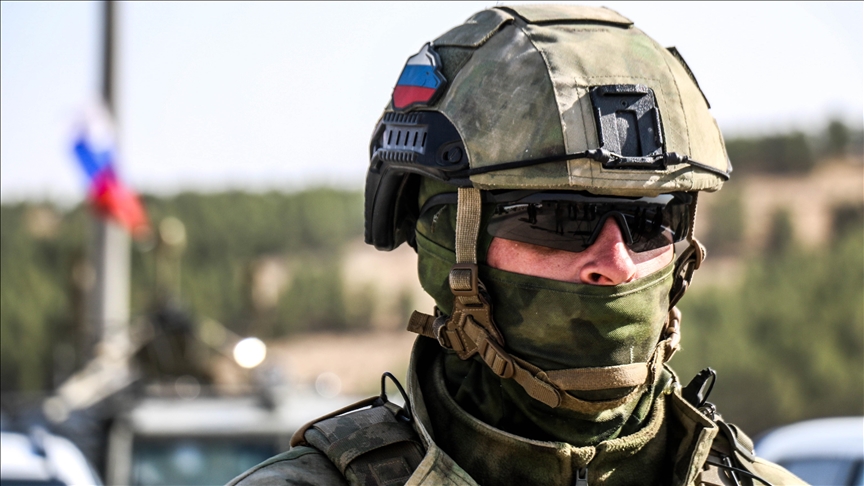As the Ukraine war approaches its third year, the men of the 59th Brigade face a grim reality: they are running out of soldiers and ammunition to fight their Russian opponents.
One platoon leader known as “Tiger” stated that just 60-70% of the brigade’s several thousand men were still serving at the outset of the battle. The rest had been killed, wounded, or signed off due to old age or sickness.
Heavy casualties at the hands of Russian forces have been exacerbated by horrible conditions on the eastern front, with frozen dirt melting into thick muck in uncharacteristically warm temperatures, wreaking havoc on soldiers’ health.
“It’s raining, snowing, and raining. As a result, people become unwell with the simple flu or angina. They’ve been out of commission for some time, and there is no one to replace them,” stated a company commander in the brigade with the call sign “Limuzyn”. “The most immediate problem in every unit is lack of people.”
On the eve of the second anniversary of its February 24 invasion, Vladimir Putin’s Russia is leading a struggle that blends attritional trench warfare reminiscent of World War One with high-tech drone warfare that is launching tens of thousands of machines into the sky above.
Moscow has made incremental inroads in recent months and claimed a huge win over the weekend by seizing control of Avdiivka in the heavily contested eastern Donetsk province.
A spokeswoman for the 3rd Separate Assault Brigade, one of the battalions that attempted to keep the town, stated that the defenders were outnumbered seven to one.
Reuters interviewed around 20 soldiers and commanders from infantry, drone, and artillery units in various areas of the 1,000-kilometer frontline in eastern and southern Ukraine.
Ukraine Soldiers Outnumbered
While they remained eager to oppose Russian occupation, they discussed the difficulties of repelling a larger, better-equipped enemy as Western military help dwindled despite Ukrainian President Volodymyr Zelenskiy’s calls for more.
Another commander in the 59th Brigade, who only gave his first name Hryhoriy, described relentless attacks from groups of five to seven Russian soldiers who would push forward up to ten times per day in what he called “meat assaults” – highly expensive for the Russians but also a major threat to his troops.
“When one or two defensive positions are fighting off these assaults all day, the guys get tired,” Hryhoriy said during a brief rotation away from the frontlines near the Russian-occupied eastern city of Donetsk.
“Weapons break, and if there is no possibility of bringing them more ammunition or changing their weapons, then you understand what this leads to.” The Russian military ministry did not respond to a request for comment on the current situation on the front lines.
Ukrainian Deputy Defence Minister Ivan Havryliuk told Reuters that a scarcity of artillery ammunition and rockets had forced Ukraine to go on the defensive and that Kyiv expected Russia to escalate its attacks on multiple fronts.
“If there are further delays to the necessary military aid, the situation on the front could become even more difficult for us,” he wrote in a follow-up letter.
Low Supply of Munitions
Kyiv relies largely on foreign money and weaponry to sustain its war effort, but with $61 billion in US aid held up by political wrangling in Washington, it appears more vulnerable than ever since the conflict began.
A soldier with a GRAD rocket artillery unit known as “Skorpion” reported that his launcher, which uses Soviet-designed ammo retained by a few of Ukraine’s friends, was operating at around 30% of maximum capacity.
“It only recently became this way,” he explained. “There aren’t as many foreign munitions.”
Artillery shells are also in low supply due to Western countries’ inability to keep up with exports during a prolonged battle. In addition to suspending US delivery, the EU has recognised that it would need more than its objective of supplying a million shells to Ukraine by nearly half by March.
Michael Kofman, a senior scholar and Russian military analyst at the Carnegie Endowment for International Peace, a Washington-based think tank, calculated that Russia’s artillery was shooting five times faster than Ukraine’s, a statistic echoed by Hryhoriy of the 59th Brigade.
“Ukraine is not getting a sufficient amount of artillery ammunition to meet its minimum defensive needs, and this is not a sustainable situation moving forward,” Mr. Kofman said.
Moscow currently controls about a fifth of Ukrainian land, including the Crimea peninsula, which it annexed in 2014, even though the frontlines of the conflict have mostly remained static in the last 14 months.
Ukrainian officials have stated that their military forces number roughly 800,000, whilst in December, Putin ordered Russia’s forces to be boosted by 170,000 troops to 1.3 million.
Beyond people, Moscow’s defence spending eclipses that of Ukraine. In 2024, it has set aside $109 billion for the industry, more than double Ukraine’s corresponding plan of $43.8 billion.
Use of Drone Technology
A new bill aiming at mobilising 450-500,000 more Ukrainians is making its way through parliament, but major reinforcements appear to be a distant hope for some soldiers already fighting.
Ukrainian Defence Minister Rustem Umerov recently referred to Ukraine’s artillery ammunition gap as “critical” in a letter to the European Union, pushing national leaders to do more to supplement supply.
According to the Financial Times, his letter stated that Ukraine’s “absolutely critical daily minimum requirement” was 6,000 artillery shells, but his soldiers could only fire 2,000 each day.
Conventional warplanes are a rare sight over the battle lines, owing to air defences that function as deterrents. A separate conflict is unfolding in the skies, with both sides competing for the advantage in drone technology.
Drones, also known as unmanned aerial vehicles (UAVs), are inexpensive and capable of accurately tracking enemy movements and dropping munitions.
Kyiv has supervised a surge in drone manufacturing and invention and is building advanced, long-range UAVs, but Moscow has more than matched its opponent with massive investments of its own, nullifying Ukraine’s early lead.
According to Ukrainian digital minister Mykhailo Fedorov, over 300,000 drones were bought from manufacturers last year, with over 100,000 dispatched to the front.
A big focus is currently on light, nimble FPV drones that provide operators, or pilots, with a first-person perspective via an onboard camera. President Zelenskiy has set a goal for Ukraine to create one million FPV drones this year, citing the technology’s battlefield advantages.
Russian Military Superiority
Limuzyn, the company commander of the 59th Brigade, stated that Russia’s widespread deployment of drones had made it difficult for Ukrainian troops to create or strengthen defensive positions.
“Our guys start to do something, a drone sees them, and a second drone arrives to drop something onto them.”
According to two Ukrainian drone pilots from different units, drones have also forced the Russians to relocate valuable vehicles and weaponry equipment several kilometres away.
“It’s now very hard to find vehicles to hit… most vehicles are 9-10 km away or more,” stated a pilot in the 24th Brigade with the call sign “Nato”. “At the beginning they were very comfortable being 7 km away.”
Two more Ukrainian drone pilots, “Leleka” and “Darwin,” both from the 92nd Brigade’s elite Achilles drone unit, described queues of two or three UAVs developing above the battlefield, waiting to strike enemy targets.
On one occasion, Leleka recounted seeing four drones from various Ukrainian units arrive to strike a target: “It’s like taxis at the airport, one drone comes, then another, and a third.”
According to Ukrainian pilots from three groups, the Russians currently have far more drones than Ukraine. The Russian defence ministry stated this month that the country had increased its manufacturing of military drones in the last year but did not provide specific data.
As the use of drones expands, both sides are increasing the deployment of electronic warfare equipment capable of disrupting the frequencies that transmit commands from the pilot to the drone, causing it to drop out of the sky or miss its target.
Darwin, a 20-year-old who dropped out of medical school to enlist when Russia invaded, likened the present drone arms race to that of aviation and air defence: planes dominated World fight II, but new air defence systems severely limited their utility in this fight, he claimed.
“In future, I am sure there will be an analogous situation with drones: The concentration and effectiveness of electronic warfare will become so big that any connection between an aerial vehicle and its pilot will become impossible.”
Source: Reuters


